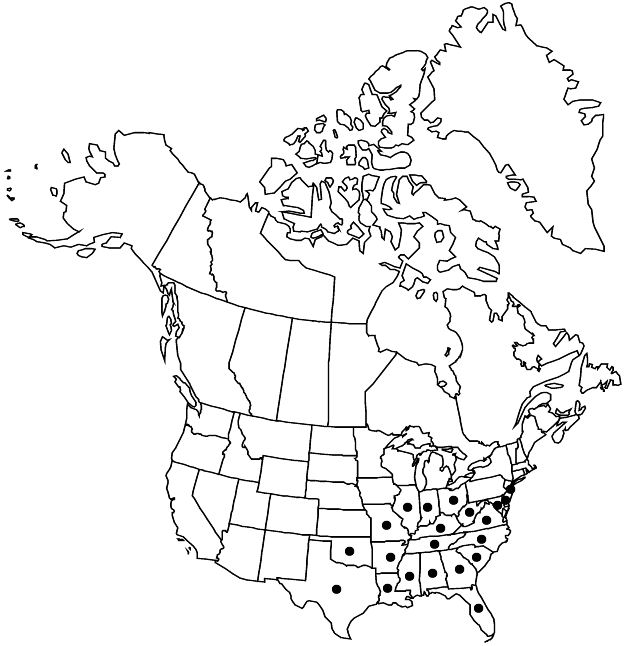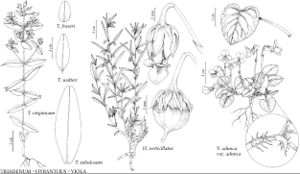Difference between revisions of "Triadenum walteri"
Phytologia 2: 289. 1947.
FNA>Volume Importer |
FNA>Volume Importer |
(No difference)
| |
Revision as of 20:14, 24 September 2019
Herbs erect, to 10 dm, sometimes with ascending branches in distal 1/2+. Stems: internodes 4-lined at first, then terete. Leaves petiolate, petiole 2–15 mm; blade narrowly elliptic to narrowly oblong, 30–150 × 10–35 mm, base cuneate, apex rounded, gland dots laminar and intramarginal. Inflorescences interrupted spiciform-cylindric, 3-flowered from terminal node, sometimes with subsessile flowers or pedunculate triads and/or flowering branches from to 8 proximal nodes. Flowers 7–10 mm diam.; sepals narrowly oblong to narrowly elliptic or lanceolate, 3–5 × 1–1.5 mm, apex obtuse to rounded; petals narrowly obovate, 5–7 mm; stamen fascicles 3–5 mm; filaments 1/2+ connate; styles 0.8–1.2 mm. Capsules cylindric, 7–12 × 3–4 mm, apex subacute. Seeds 0.8–1.1 mm.
Phenology: Flowering late summer (Jul–Sep).
Habitat: Swampy or marshy ground in woods, pond or lake margins, on fallen logs
Elevation: 0–400 m
Distribution

Ala., Ark., Del., Fla., Ga., Ill., Ind., Ky., La., Md., Miss., Mo., N.J., N.C., Ohio, Okla., S.C., Tenn., Tex., Va., W.Va.
Discussion
The petiolate leaves usually distinguish Triadenum walteri from the other three North American species of Triadenum (see note under T. tubulosum.
Selected References
None.
